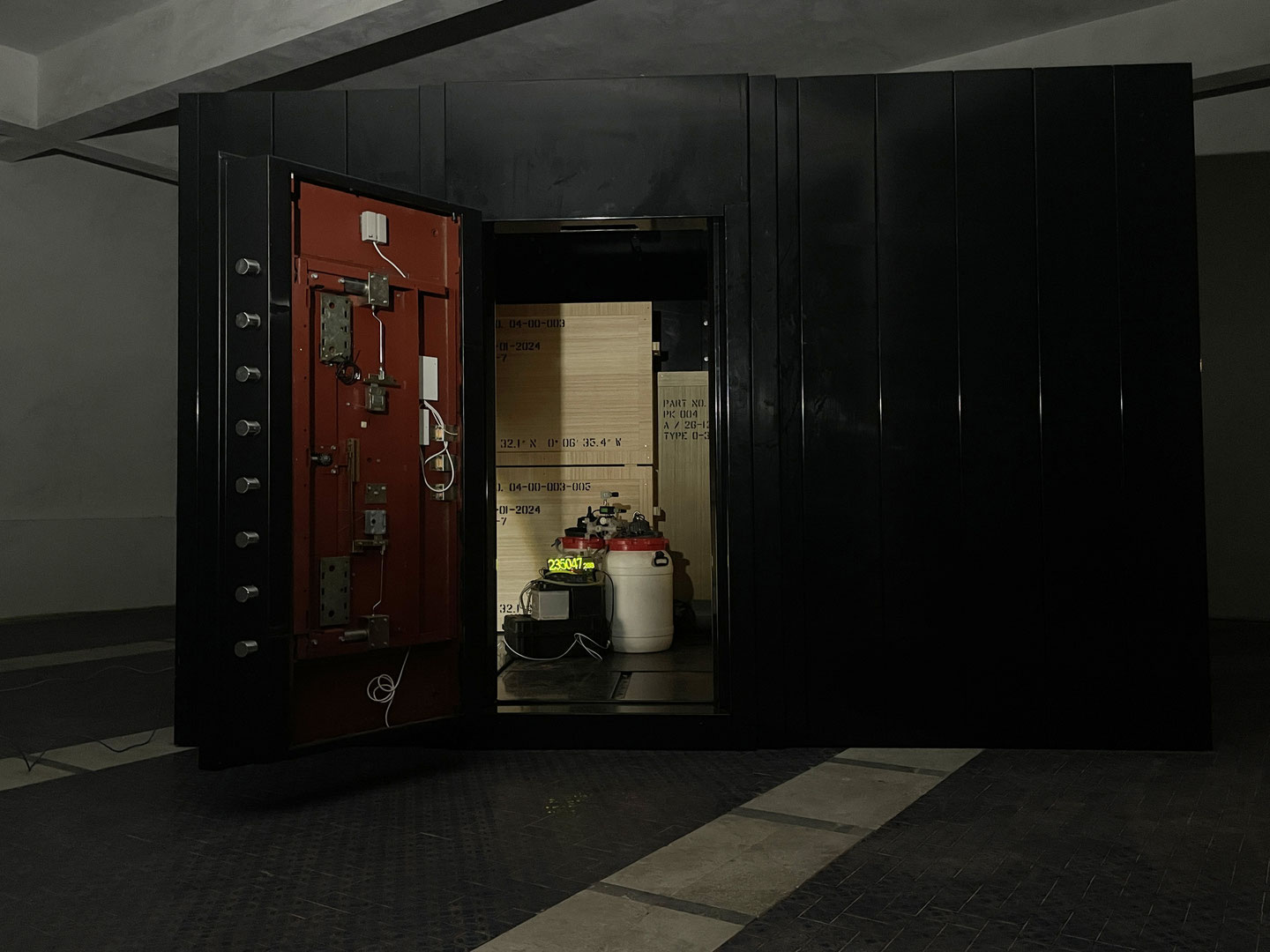2024-12-27 –, Saal GLITCH
Language: English
Artist Andrei Molodkin held $45million of art hostage to free Julian Assange. He vowed to dissolve Picasso, Rembrandt, Warhol and other masterpieces in acid using a dead man’s switch device inside a 29-tonne Grade 5 Safe Room if Julian Assange was to die in prison. The talk will explain the process and methodology.
Dead Man’s Switch is an art shield. It is not a human shield: that is what terrorists produce. Dead Man’s Switch, on the contrary, is a tool for negotiation.
“Taking hostage” is one of the most common languages used by the power structure. In his artistic career, Andrei Molodkin, developed the method of mirroring the language of power within the formal parameters of Political Minimalism. In the case of the Dead Man’s Switch, the Medusa Gorgon mirror used to hit the power structure has been done by taking hostage the most important of capitalistic symbols, its icons and values. In this catastrophic time, to destroy art is much more taboo than to destroy the life of a person. Arianna Mondin, applied Interpol’s criminal investigation method to the field of architecture in her PhD to unveil the connection between architecture and oil. She used this method in the development strategy of Dead Man’s Switch.
The talk will focus on the process of realizing the Dead Man’s Switch to mirror the language of power to release Julian Assange from prison. In particular, it will clarify the operation to involve artists and collectors in participating by donating their artworks to secure the survival of the most consequential political prisoner of our times. The project involved also specialists in security, negotiation, hardware and software, all together organised in a system aimed at reprogramming the power structure.
The talk will conclude by explaining the technical details, software and hardware, and the conceptualisation of the counter as a method of escalation and resetting the system.
Andrei Molodkin's artistic practice is a leading example of Political Minimalism. He is distinctive for his formal approach to material, almost exclusively working in human blood, crude oil, steel and biro. Molodkin's projects have been censored throughout his career, from the Venice Biennale in 2009 where he represented his country in the Russian Pavilion – to 2021 when 'Whitehouse Filled with the Blood of US Citizens' was deemed too dangerous to show and was pulled from its intended location due to political tensions in the lead up to the Insurrection in Washington D.C. Recently, he has made international headlines with 'Putin Filled with Ukrainian Blood', a globally exhibited work produced in response to the Russian invasion of Ukraine. The work was smuggled into Moscow and live-streamed on Red Square during the Victory Day parade. To coincide with the World Cup in Qatar, Molodkin presented a sculpture of the World Cup trophy filled with Qatari oil. It had a symbolic price of $150m to match the amount of money allegedly spent on bribes and kickbacks to FIFA officials. Last year, he publically sold blood-soaked copies of Prince Harry's Memoir, and projected a sculpture filled with the blood of Afghans onto St Paul's Cathedral to comment on Harry's remarks in Spare about his number of kills in Afghanistan. Molodkin has exhibited world-wide. His large-scale installations are in distinguished museum collections with ‘Liquid Modernity’, 2009 entering the Tate Collection, UK in 2012. His artwork 'Dead Man's Switch' 2024 has achieved global resonance with more than 300 publications worldwide.
Architect and PhD, her research and production focuses on the relationship between oil, architecture and power. She is currently in charge of educational projects and spaces at the art institution ‘The Foundry’, France.
She has lectured in universities and institutions and curated workshops for university and PhD students. She participated in research groups including the PRIN (Research Projects of National Interest) SYLVA - Ripensare la selva. Verso una nuova alleanza tra biologico e artefatto, natura e società, selvatichezza e umanità in the research unit of the University of Genova. She was a member of the editorial staff of Vesper. Rivista di Architettura, Arti e Teoria | Journal of Architecture, Arts and Theory of the Università Iuav di Venezia.
She participated in international conferences and published articles and book contributions


